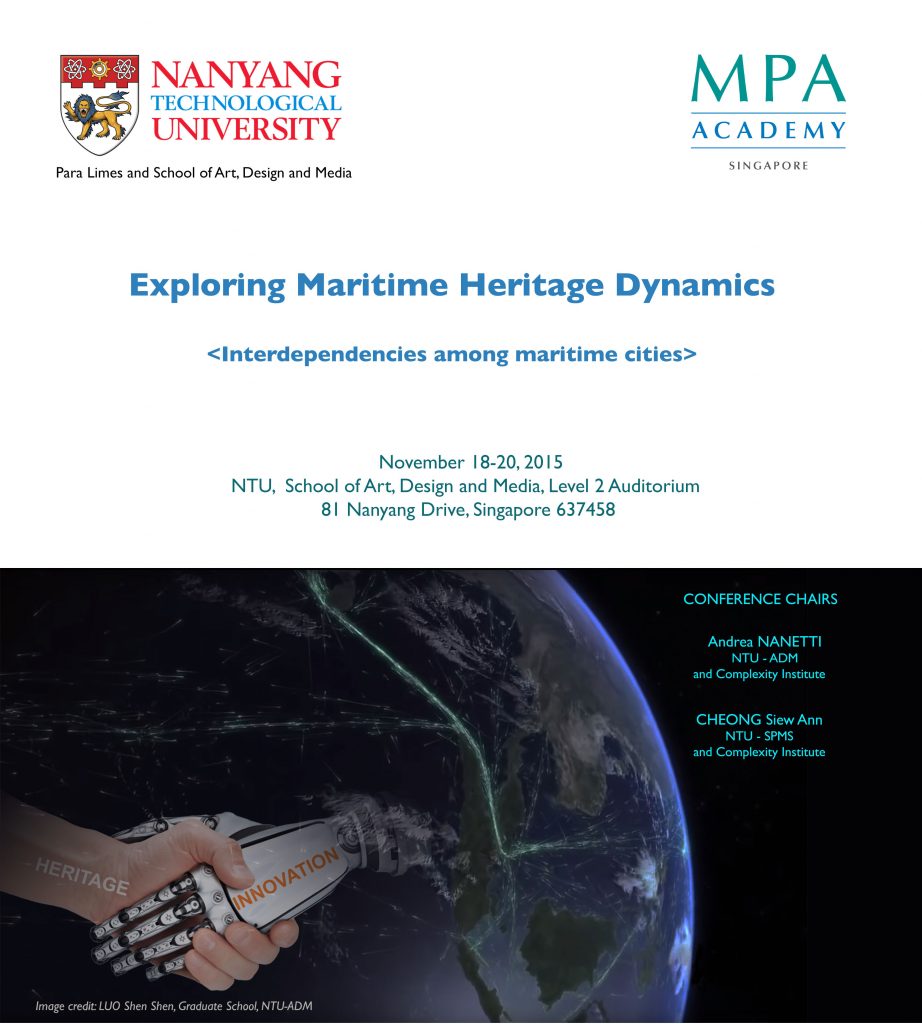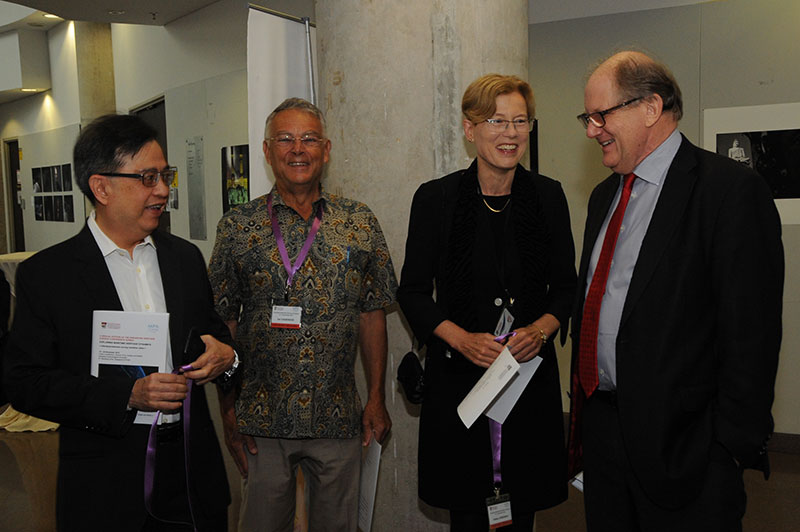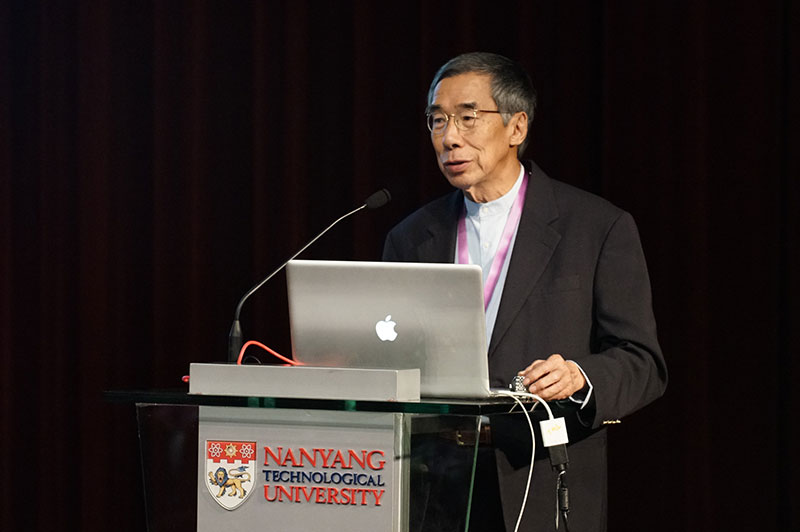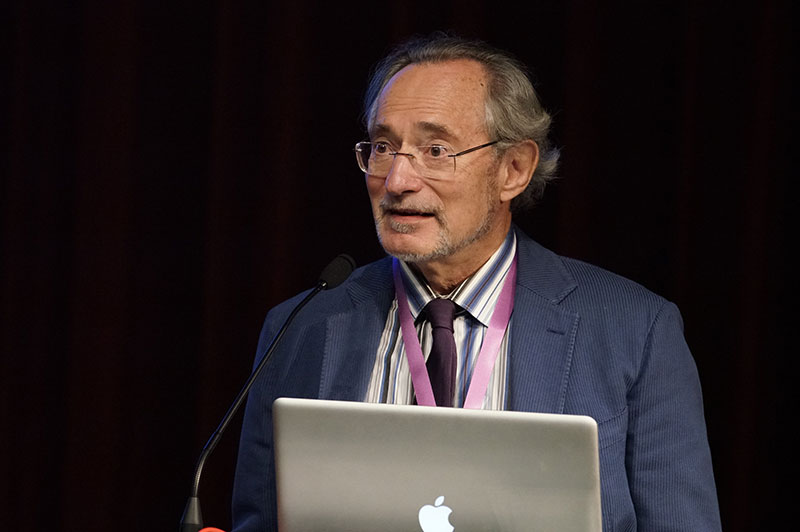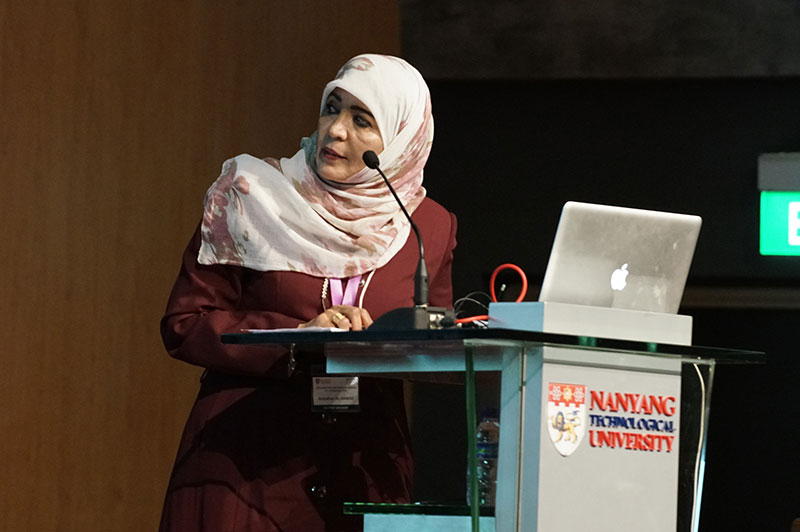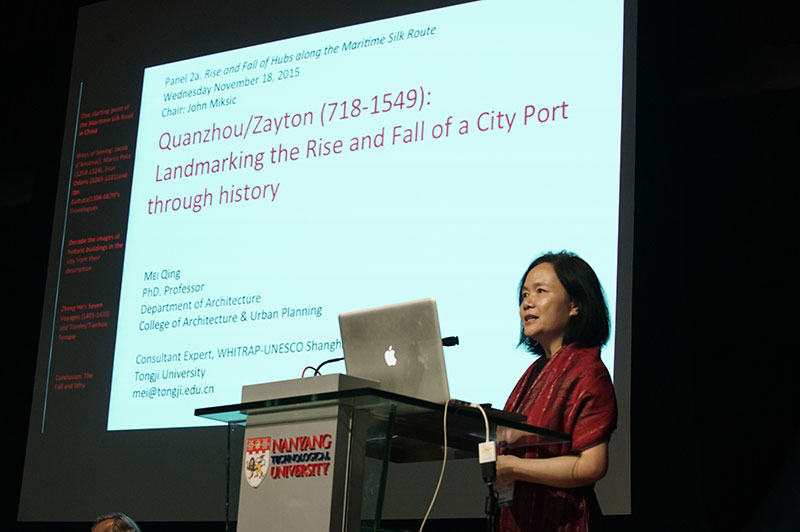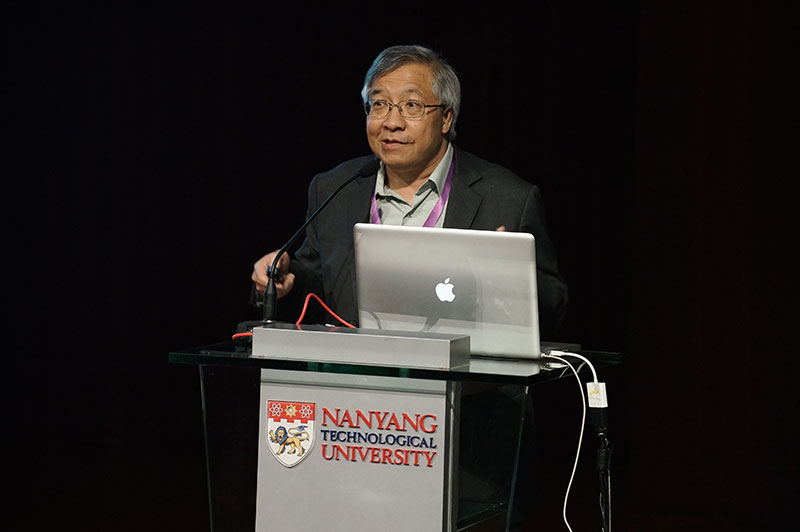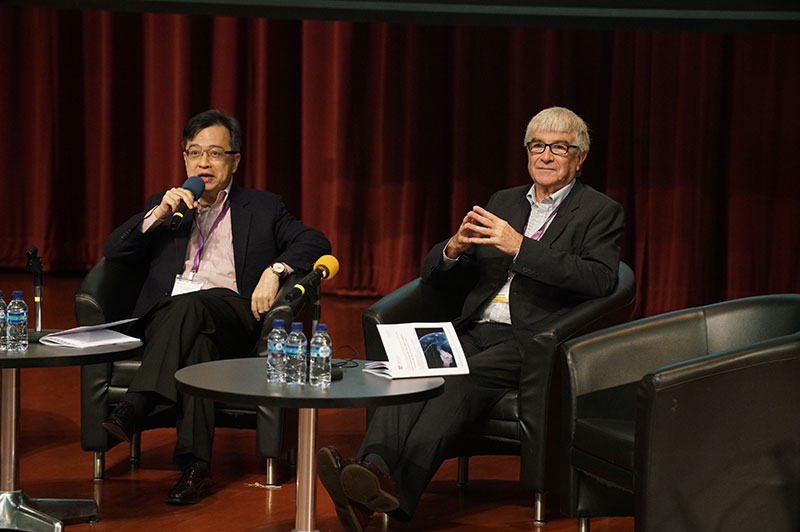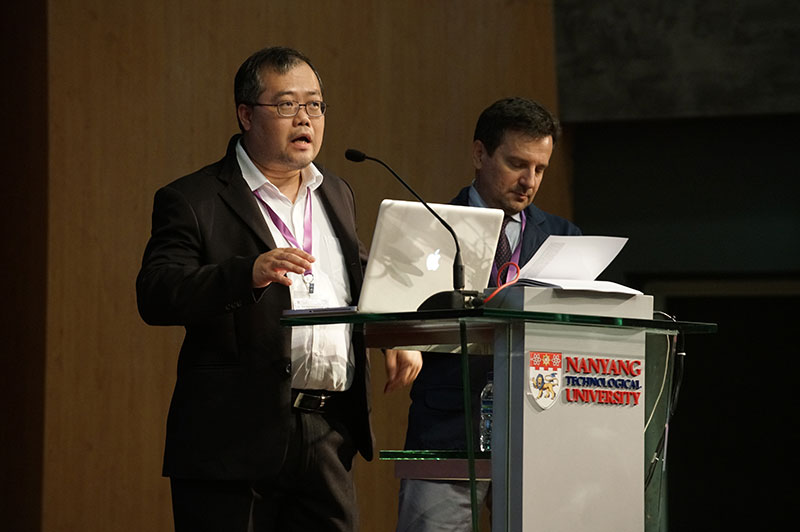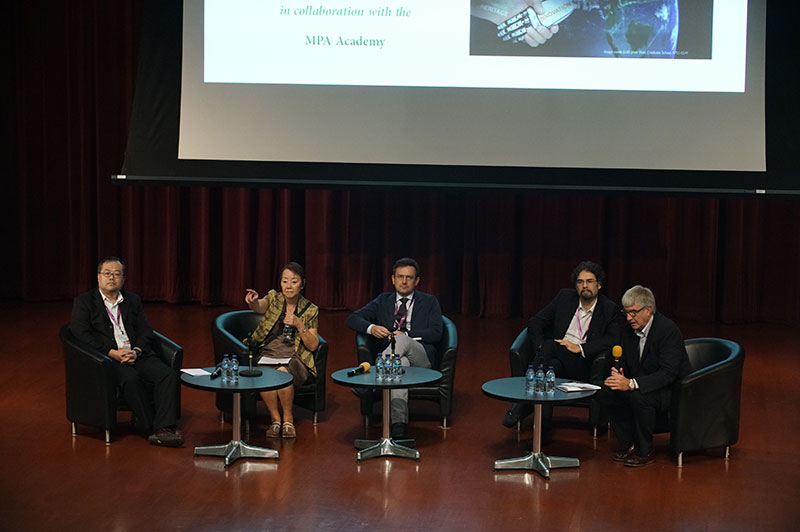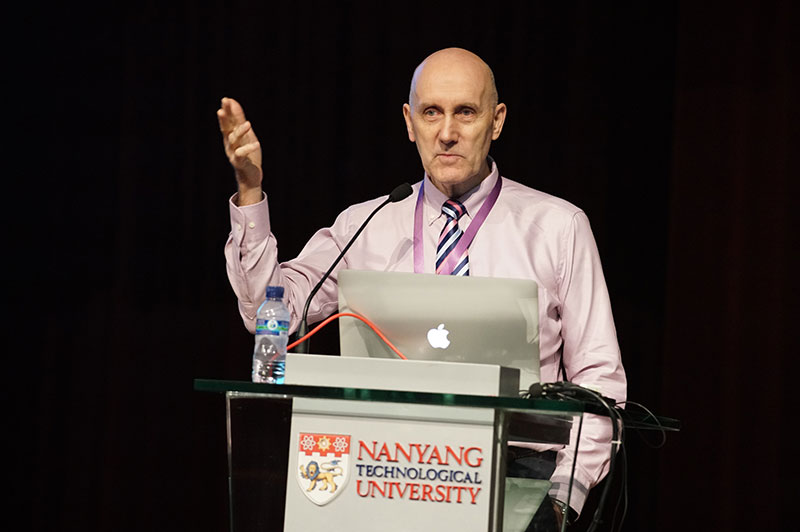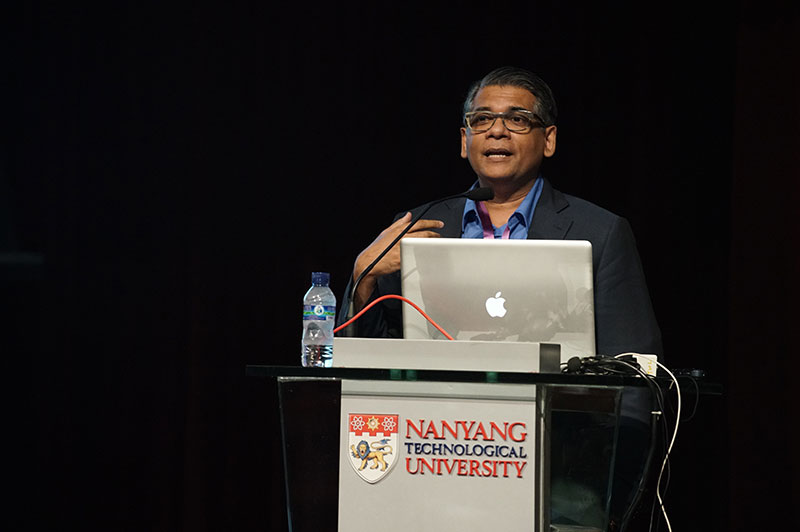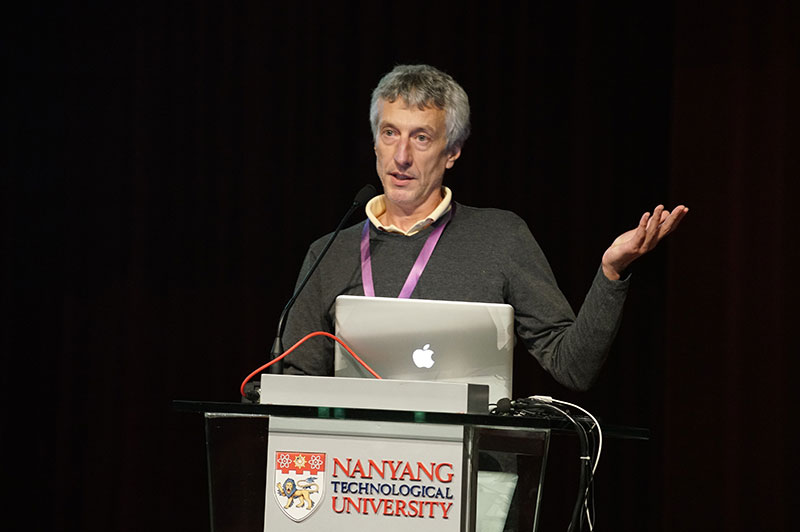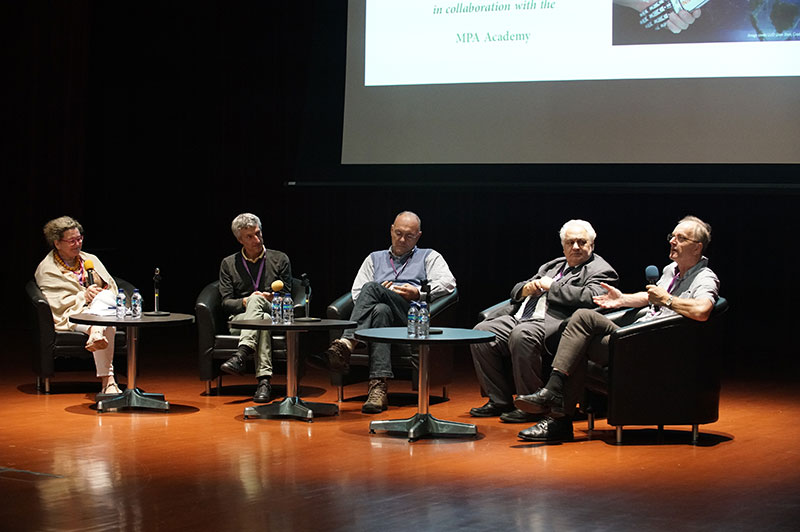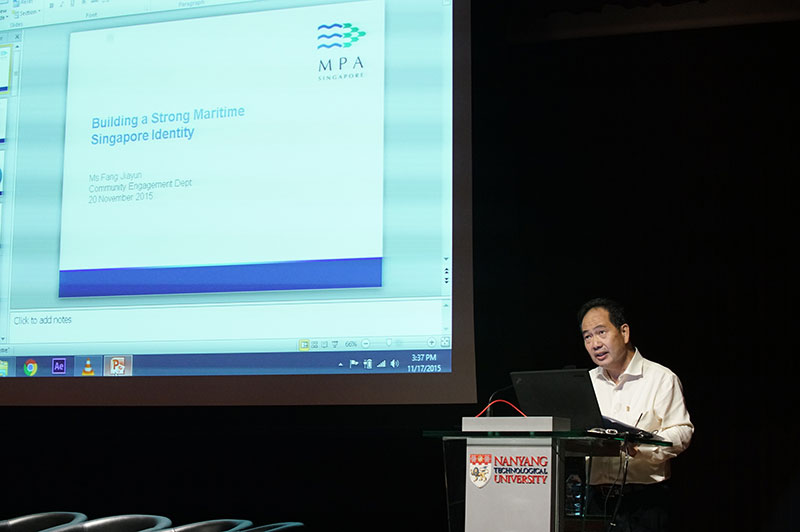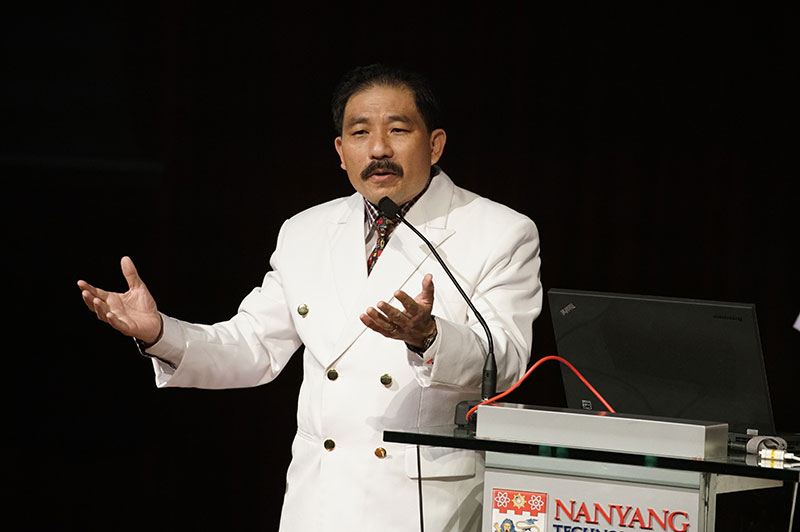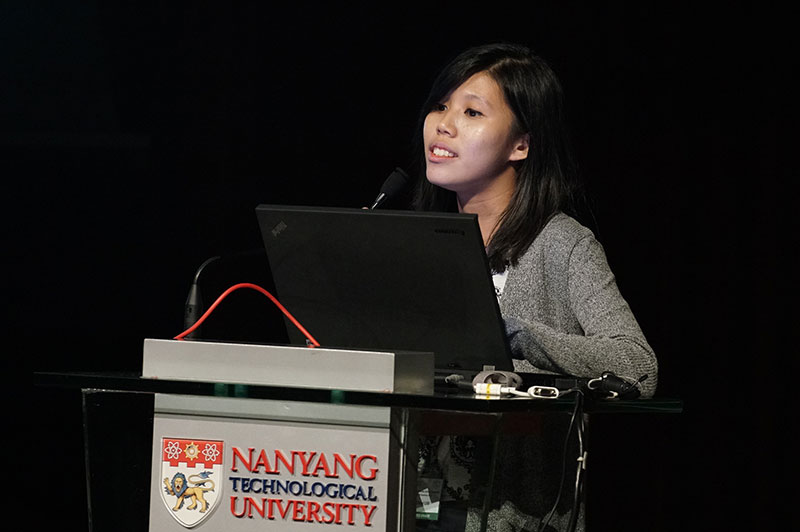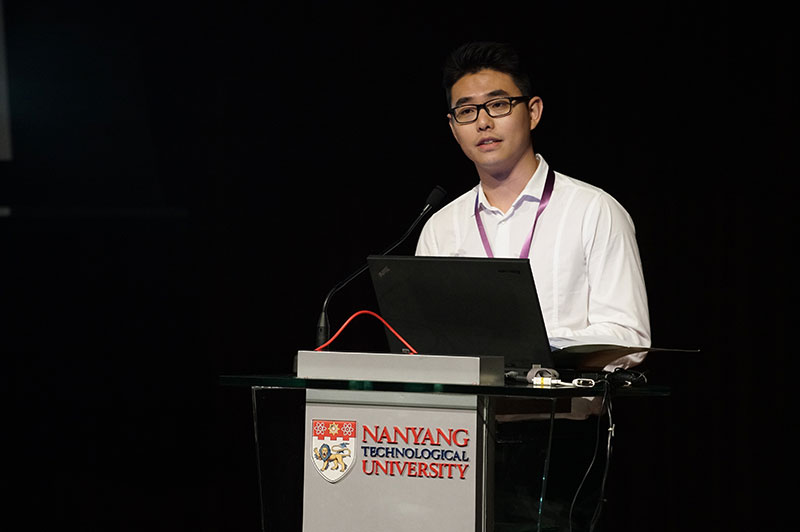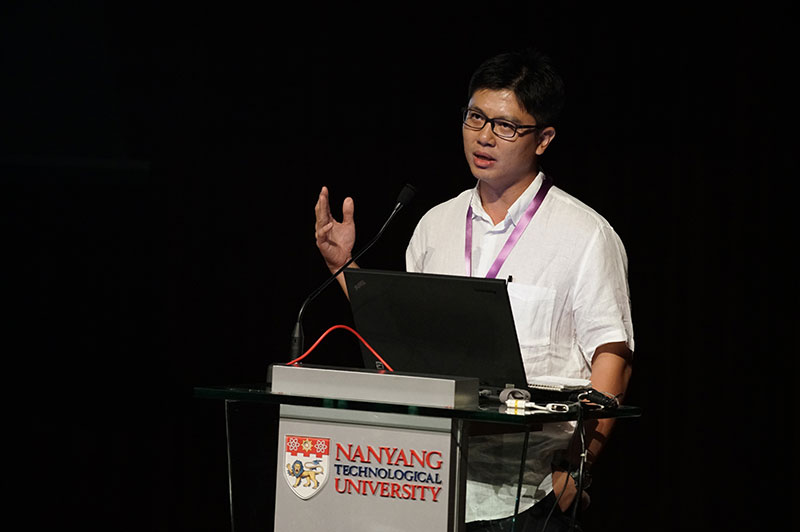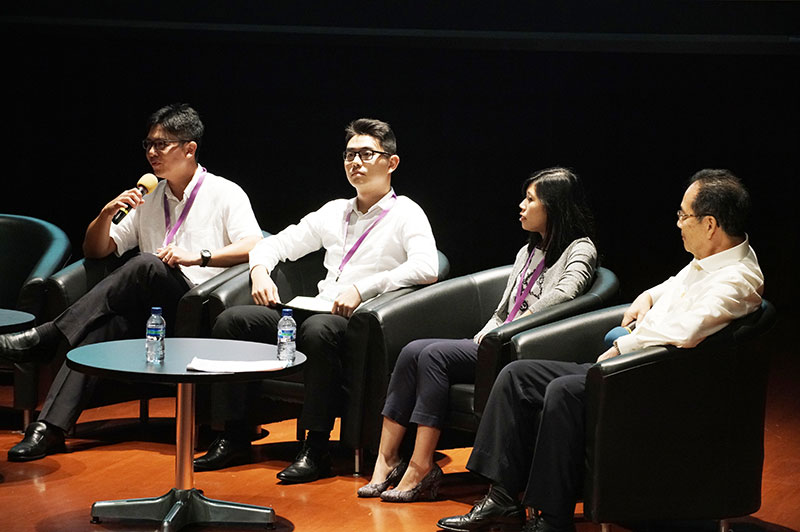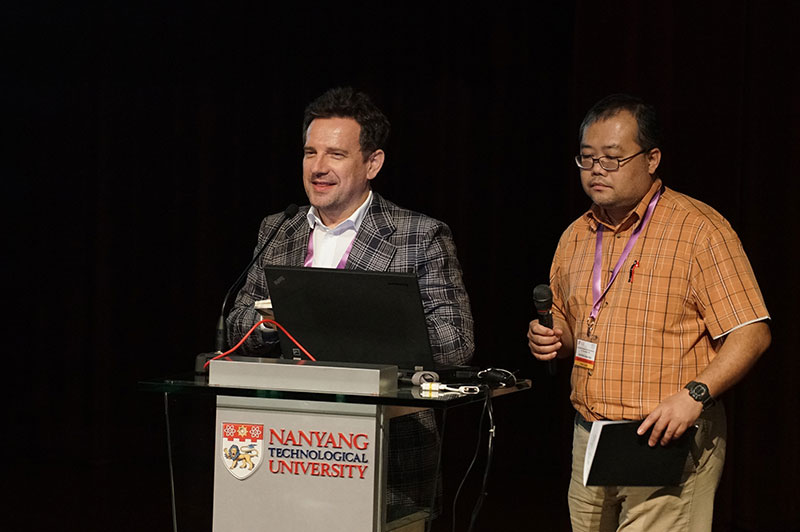The following is an edited transcript of a talk by Dr Sharon Siddique, Adjunct Professorial Fellow at Lee Kuan Yew Centre for Innovative Cities, Singapore University of Technology and Design (SUTD). It was delivered on 15 November 2017 at our monthly Singapore Platform for East-West Dialogue.
POST-COLONIAL
I want to take issue with the concept, “post-colonial”. The meaning and focus of post-colonial studies is vast and complicated. One of the central narratives is subaltern studies. Subaltern studies essentially focuses on misperceptions of the colonized self, based on the adoption of the world view of the colonizers. The preoccupation of Subaltern studies is to uncover an alternative interpretation of colonial history. The focus is on recovering the perspective of the oppressed over the oppressors. At its most general, it focuses on Orientalism—a reinterpretation of history.
Although the rewriting of the historical narrative is vital, my perspective on post-colonialism is present-oriented. I am interested in the impact of post-colonialism and how it colours our view the present. Much of this, as we will see, is unconscious. I will focus on the implications of the term, “post”. The dangerous ideological assumption implicit in the term “post-colonial” is that we are “done” with colonialism and is therefore no longer relevant to how we perceive our present lived-in environment. Post-colonialism only helps us re-evaluate our perception of the past.
We in the East are supposedly post-West. “Post” implies a break; a turning point; a new beginning. We assume that the post-colonial narrative began at the end of WWII culminating with the birth of many new nation states in the 1950s and 1960s. We thought then that we were initiating a new era of independent nation-states in the newly fashioned Third World. We assumed that we were in a post-colonial moment between what was (the colonial empires), and what was being created—a succession of former colonies progressing from Third World, to Second, and eventually, if we are very optimistic, to First. But it has not really turned out that way. To put it bluntly, after seven decades, we are still stuck in the post-colonial.
What does this mean and why? We begin with the term “post-colonial”, and ask the question, have we truly left the ideological dominance of the West? I think It is false to assume that we can stop the clock at post-colonial and reset it at independence. It is becoming increasingly obvious that the process is not so simple.
MOVIE ANALOGY
Post-colonialism is like entering a movie screening mid-way. We have missed most of the movie, the plot is difficult to follow, and the characters are confusing.
If we had arrived earlier, we would have caught the beginning of the movie. The characters and their motivations are introduced. The storyline unfolds. If we enter the movie halfway, we are disoriented, and we sometimes lose the plot because we are ignorant of what has transpired. This is important because it makes it much more difficult to understand the nuances of plot and motivation.
Our movie—the one we will be screening tonight—is titled, Singapore and Its Neighbors.
We could choose many beginnings, but arguably, with reference to our postcolonial narrative, we will choose to begin in 1824—a natural beginning for our story. The Anglo-Dutch Treaty of 1824 was designed to solve many of the issues that had arisen because of the British occupation of Dutch properties during the Napoleonic Wars, as well as issues regarding the rights to trade that had existed for hundreds of years in the Spice Islands. The treaty between the Dutch and the British addressed a wide array of issues surrounding the expansion by either side of the Malay world. The British establishment of Singapore on the Malay Peninsula in 1819 exacerbated the tension between the two empires, especially as the Dutch claimed that the treaty signed between Raffles and the Sultan of Johore was invalid, and that the Sultanate of Johore was under the Dutch sphere of influence. The questions surrounding the fate of Dutch trading rights in British India and former Dutch possessions in the area also became a point of contention between Calcutta and Batavia. In 1820, under pressures from British merchants with interests in the Far East, negotiations to clarify the situation in Southeast Asia began.
The Treaty settled several matters:
- The Straits of Malacca (and the Malay World) was split into two. All territories to the north of the Straits of Malacca belonged to the British, and all to the south belonged to the Dutch.
- The great swap: Bencoolen (located on the west coast of Sumatra) was given to the Dutch, while Malacca was given to the British. The issue of Singapore was settled; it remained British and its status was never questioned again.
- Singapore remained part of the British sphere, and gradually lost its original connection to the Malay World.
So now we have the beginning of the plot. But before I continue with the movie, I would like to give you a pop quiz. Six multiple-choice questions. If you fail, your punishment will be to listen carefully to the continuation of my movie script.
POP QUIZ
1) How many islands are there in Riau Island Province?
- 3
- 35
- 350
- 3,500
ANSWER: 3,500
2) What are the populations of the cities of Batam and Johor Baru?
- Less than 500,000 each
- More than 1 million each
- Johor Baru’s population is bigger than Batam
- Batam’s population is bigger than Johor Bahru
ANSWER: More than 1 million each.
3) Melaka was conquered by the Portuguese in which year?
- 1641
- 1598
- 1704
- 1511
ANSWER: 1511. It is worth noting that Melaka was conquered more than 300 years before Raffles founded Singapore. What happened in the region in these three centuries?
4) Who was the Governor-General of Java from 1811 to 1815?
- Herman Daendels
- Albert Wiese
- Stamford Raffles
- William Farquhar
ANSWER: Stamford Raffles.
The interaction between Dutch East Indies (DEI) and the British empire was vast and interesting. The dialogue partners were Calcutta and Batavia. The DEI never attempted to recover the position of Malacca. Their seat of governance was Batavia.
5) How far is Batam from Singapore at its closest point?
- 50 km
- 70 km
- 15 km
- 5 km
ANSWER: 5 km
You can see Batam from Singapore. From Nongsa Point, Singapore’s East Coast floats like a mirage shimmering on the water across the straits—so very close physically, but a vast distance mentally.
6) Where is the city of Tanjong Balai located?
- Batam
- Johor
- Karimun
- Melaka
ANSWER: Karimun
Karimun almost became Singapore. Today, it is a sleepy Dutch-style Indonesian town across the Straits, with Bauxite mines, beaches, and ship repair facilities. Best ferry connections are from West coast of Johor.
So what we have determined in this pop quiz is that we know very little about our neighbors. Post-colonial folds the colonial into our sense of history, but with a terrific British tinge.
I have selected three scenes from the movie, each illustrating an important dimension of Singapore and Its Neighbors. The common narrative is that we, as captives of the post-colonial, are quite ignorant of the Dutch colonial worldview, which still partially dominates our frozen moment. We are still more comfortable being British.
THE NEW CAPITAL OF INDONESIA

Jakarta │Photo: Kira Kariakin / Flickr
Post-colonial blinders lead to frozen moments. Circumstances change, but we have difficulties imagining how things could change and why. This is illustrated by the phenomena of moving capital cities. At the moment, in Jakarta, there is a quiet renewed debate about moving the capital of Indonesia from Jakarta to a new location. The most often cited new location is Palangkaraya, currently the provincial capital of Central Kalimantan. How seriously should we take this?
President Jokowi is a great supporter, and has recently directed BAPPENAS (the Indonesian Central Planning Authority; the Indonesian equivalent of Singapore’s Urban Redevelopment Authority with several other responsibilities) to complete a feasibility study by the end of 2017.
This is not the first time that Palangkaraya has been singled out. When President Soekarno, built the city in 1957, he indicated his intention to eventually move the federal capital there which, of course, did not transpire.
The reasons for this are complex and layered, but to even get a grip on what is going on, we need to know more about Kalimantan. So where is Kalimantan? On Borneo, which is the third largest island in the world (behind Greenland and New Guinea). Borneo is split amongst Indonesia (Kalimantan) Malaysia (Sabah and Sarawak) and Brunei. The entire island has a population of only 10 million, and Palangkaraya is located at the geographic centre of the Indonesian archipelago. If we overlay a map of Indonesia over a map of the USA, it stretches from Alaska to Florida.
As we began our colonial narrative in 1819, we tend to forget how much longer the Dutch colonial narrative in the Dutch East Indies actually is. Batavia was the capital of DEI for 330 years (1619-1949), and the capital of Indonesia for the past seven decades. Even contemplating a move is mind-boggling, yet we can’t simply dismiss it as impossible.
Moving capitals is a feature of Southeast Asia’s sense of place. Capitals can move to newly created cities, such as from Rangoon to Naypyidaw. They can split in two, such as Kuala Lumpur being the business centre and Putrajaya as the administrative center of Malaysia. This also happens at the provincial and state levels. In Johor, Kota Iskandar is the administrative capital, while Johor Baru is the commercial city. Suffice to say, this typical feature of Southeast Asian moving cities can either prepare us for possible change, or leave us surprised and perplexed, because we didn’t see it coming and we don’t understand why it did.
THE DEFINITION OF MALAY
The second movie scene I would like to describe is the definition of what constitutes being a Malay. Our recent presidential election, which was, for the first time, also a Reserved Presidential Election, provided an excellent example of the complexities of race dimensions, and how confused it can be if you enter the movie mid-way. Singapore, Malaysia, Brunei and Indonesia have quite different definitions of what is Malay.
Singapore is the most open and flexible. Anyone who considers oneself a Malay, and is accepted by the community as such, is a Malay. While it is seemingly simple, the extensive debate and discussion following the election indicates that it is anything but simple in our post-colonial frozen moment.
To understand the Singapore debate, it is necessary to examine what Malay means in Indonesia, Malaysia, and Brunei.
To understand who is a Malay in Indonesia, one has to begin with the term, sukubangsa. It roughly translates to an ethnic group, and it generally links an ethnic group to a specific locality. Malays are natives of the Riau Islands, mainland provinces of Jambi, Riau, and South Sumatra. Other sukubangsa may live in the Riaus, such as Javanese, Minangkabau, Batak, etc., but they are not considered Malay.
The “religion” element of “Malayness” is used differently in the four countries. Indonesia and Singapore do not explicitly specify a religion for Malay, but it is assumed that Malays are Muslim. Here, the argument turns on whether or not you can practise Malay customs and culture without being a Muslim.
In Malaysia, to qualify as a Malay, one must practice Malay custom, speak the Malay language, and be a Muslim. In order to understand the status of Malays in Malaysia, one needs to understand the term, bumiputera, which literally means sons of the soil. All Malays are bumiputeras, but not all bumiputra are Malays. The term was used to include the other ethnic indigenous groups such as the indigenous ethnic groups of Sabah and Sarawak.
There is a further complication to the definition of Malay in Malaysia. In some states, Malays are under the protection of the Sultans, who, since British rule, are responsible for Malay and Islamic customs. One must note that Arabs and some Indian Muslims are included as Malays in some states, but are not considered Malays in others.
So, in Singapore, an Arab can be a Malay if he chooses. In Malaysia, whether or not an Arab can be a Malay or bumiputera depends on the rules of the state in which he or she is domiciled. In Indonesia, Arab is a separate sukubangsa.
Finally, Brunei defines itself as Melayu Islam Beraja (MIB)—Malay-Muslim Monarchy.
SINGAPORE: THE PEARL OF SOUTHEAST ASIA
The final scene from the movie which I would like to describe is called “Singapore: The Pearl of Southeast Asia”.
Singapore is special in many ways. In the context of our present movie, the important thing to note is that it is the only Chinese-majority city in Southeast Asia; a first for the Malay world. I remember discussing this with an Indonesian friend who told me, “Yes, Singapore is a pearl. It is costly and beautiful. But we never forgot how the pearl was produced: it began when a tiny grain of sand entered and irritated us.” A variation on this is the “little red dot”, which was coined in the late 1990s by the then-President of Indonesia, B. J. Habibie. Since then, Singaporeans have claimed that pejorative phrase as a badge of honour.
Singapore is a colonial creation adjusting to its own post-colonial frozen moment. I will illustrate this by talking about Singapore and her nearest neighbors to the North and South. By freezing the frame on Singapore, we can see what we are missing. What we need is to fill in the gaps of what we have missed from the first half of the movie so that we can better understand the narrative on post-colonialism
First, we need to concentrate on rebalancing Singapore’s post-colonial frozen moment. We are strong on Malaysia, but weak on Indonesia. We are knowledgeable about Johor, but quite clueless about Riau Island Province.
Why are these questions important to us? It helps us to see the impact of tri-lateral initiatives we have had various experiences since 1965, including Konfrontasi with Indonesia. We have tried several versions of tripartite cooperation such as SIJORI or the Indonesia-Malaysia-Singapore Growth Triangle , which was not very successful. At the moment, we have again swung to an emphasis on the comfort zone of bilateral relations with Malaysia, largely via developments in Johor, and this is growing. More than half a million people cross the causeway everyday; Johoreans cross to work in Singapore, and the competitive advantage is not only higher pay, but also a favorable exchange rate.
Second, Singapore is most comfortable as a global city. In the region, it interacts as an independent nation-state and deals with the capital of the its neighbors. It has more difficulty in carving out an appropriate identity for interacting directly with Johor and Riau directly, as neighboring state and province respectively. The result of this is that most Singaporeans are more familiar with London and New York than with Palembang and Pekanbaru.
In order to improve our success rate with our neighbors, we must not be drawn into dismissing the still present legacy of colonialism in our post-colonial frozen moment. We cannot afford to remain ignorant of our surroundings in terms of pre-colonial boundaries which were so drastically altered by intervention of colonizers. In Singapore and in Southeast Asia we have been stuck in “postcolonial” for seven decades. Our stalled position means that in our present, and future, we are missing vital analytical elements.
The third issue in assessing Singapore’s post-colonial frozen moment is that we need to be more aware of the rapid thaw in terms of the impact of forces external to the region. There are three forces at play—the rise of China, the opening of India, and the diminishing role of the Western world in Asia.
There is a rupture between colonialism and post-colonialism. This implies that we are, in some fashion, post-West. In the immediate aftermath of colonialism, the rupture, and the creation of a new era, was nationalism and the nation-state. However, rather than coalescing, nationalism appears to be losing its ideological grip, and the post-colonial nation-state does not appear to have ushered in a new era. In Malaysia and Indonesia, there is currently a great deal of re-scripting of the fundamentals; things which we thought had been settled decades ago. There are many complex reasons for this, but I will only speculate on a few.
First, and this is a huge generalization, post-colonialism turned its sights inward, and became preoccupied with the introspective exercise of re-evaluating contexts of colonialism.
Second, it is worth noting in passing that this thawing process appears to be global. Most countries in the Middle East, suffered from the fundamental problems over their national identities. More than a century after the disintegration of the Ottoman Empire, from which most of them emerged, these states have been unable to define, project, and maintain a national identity that is both inclusive and representative. The question is where and how the thawing of our frozen moment will proceed.
We will bequeath the challenge of answering this question to your generation. Choose to open yourselves to the many fascinating venues in our neighborhood. And I mean this personally. As a start, I suggest you take a two-hour ferry ride to Tanjung Balai Karimun and imagine where Singapore might have been. Or drive over to Forest City and see the Country Garden, a massive construction by a Shanghai-based construction company.
But if you really want an unforgettable metaphysical experience I suggest you take the 8 a.m. ferry from Tanah Merah Ferry Terminal to Nongsapura. You board the ferry at 8 a.m., and the trip takes 40 minutes. You will arrive at 7.40. That is, you arrive in Batam 20 minutes before you have left Singapore. Batam is on Waktu Indonesia Barat, which is one hour behind Singapore time. You arrive before you leave. This trip puts you in the mood to sit back and enjoy the Indonesian experience. As you tour Riau tune in to how Dutch it is. We live in a fascinating neighborhood. Don’t miss it.
Dr Sharon Siddique is an independent scholar, and a director of Singapore-based Sreekumar.Siddique & Co., a regional research-consulting firm established in 1993. Prior to this, she was a Senior Research Fellow and Deputy Director of the Institute of Southeast Asian Studies (ISEAS). She was also a founding member of the Malay Heritage Board, which was constituted to manage the Malay Heritage Centre.
At ISEAS she was in charge of coordinating regional research, and also chairman of the Institute’s Publications Unit Review Committee. At Sreekumar.Siddique & Co, she has provided customised research consulting services and private briefings for company boards, senior managers and public policy officials, with a focus on Southeast Asia (see website for more details (www.sreekumar-siddique.com).
Dr Siddique is a noted authority on Islam and socio-cultural change, and has written extensively on social restructuring and urban planning. She has degrees in development sociology, Malay Studies and linguistics from the Universities of Bielefeld (Germany), Singapore and Montana (USA).


